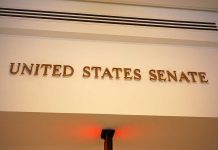
Gunfire in a bustling Alabama tourist district transformed a night of celebration into chaos, spotlighting the fragile boundary between normalcy and tragedy in American public life.
Story Snapshot
- A downtown Montgomery tourist hotspot became the scene of deadly crossfire late Saturday night.
- Two shooters exchanged gunfire in a crowded area, resulting in 2 deaths and 14 injuries.
- The incident shattered the illusion of safety in public spaces, raising questions about urban security and preparedness.
- Conservative perspectives challenge the efficacy of current approaches to public safety and criminal deterrence.
Tourist Haven Turns Into a Crime Scene
Montgomery’s downtown area, usually alive with revelers and street musicians, was abruptly jolted by gunfire at 11:30pm on a Saturday. Two individuals opened fire at one another, sending bullets whizzing through crowds of tourists and locals. The rapid escalation from celebration to panic underscored how quickly violence can erupt, even in spaces marketed as safe and family-friendly. Survivors recounted ducking behind vendor carts and diving for cover in a desperate bid to escape the hail of gunfire.
Rival gunmen started shooting at each other in a crowded downtown nightlife district in Alabama's capital city Saturday night, killing two people and injuring 12 others, police said. https://t.co/lTjJmWfVHX
— CBS News (@CBSNews) October 5, 2025
Law enforcement responded within minutes, but by then, two people were dead and fourteen were wounded. Witnesses described scenes of confusion as first responders navigated both the wounded and the terrified. Questions immediately surfaced: How could such violence break out in a well-patrolled tourist zone? What failures—if any—enabled the shooters to bring deadly weapons into the heart of the city?
Public Safety on Trial: The Limits of Preparedness
Montgomery’s police chief, James, addressed the media with a mix of resolve and frustration. The city’s investment in surveillance, visible patrols, and community outreach did little to prevent the carnage. Security experts point to the inherent unpredictability of individual actors in crowded spaces; deterrence strategies are effective only to a point. Conservatives highlight that stringent gun laws and law enforcement presence alone cannot neutralize determined offenders. This tragedy exposes the persistent gap between theoretical safety and the harsh unpredictability of real-world violence.
Family members of victims are left asking whether the city’s promises of safety are more marketing than reality. For many, the event is a grim reminder that even the most prepared communities remain vulnerable when individuals are determined to do harm.
Calls for Accountability and the Conservative Response
Demands for accountability have grown louder in the aftermath. Critics argue that the city must do more than offer condolences and promises of “lessons learned.” Conservative commentators point to the dangers of depending solely on government or police intervention, advocating instead for stronger personal responsibility and deterrence measures. They argue that a culture of permissiveness toward criminal behavior and a lack of meaningful consequences emboldens would-be offenders. The debate is far from settled, but one thing is clear: the community’s sense of security has been profoundly shaken, and the path back to normalcy will require more than reassurances.
As the investigation continues and the wounded begin their long recovery, Montgomery—and cities across America—must confront uncomfortable questions about the safety of their public spaces. The story remains unfinished. The next major event, festival, or bustling night out will test whether lessons have truly been learned, or whether the cycle of violence and reaction will simply repeat in another place, at another time.
Sources:
At least 2 dead and 12 injured after shooting in downtown Montgomery, Alabama, police say










